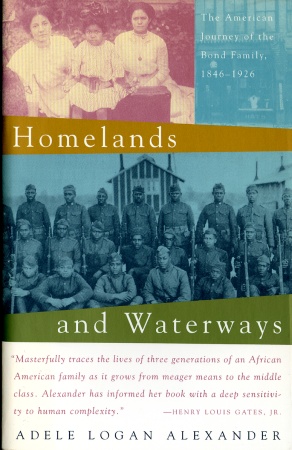Q: There seems no end to books about the American Civil War. What does The Long Shadow of the Civil War offer that is new?
A: Although Civil War books about the home front are not new, this is a new sort of home front study that focuses on three communities from three different states. Rather than close with the war and Reconstruction, The Long Shadow of the Civil War follows individual Unionists and multiracial families into the New South era and, in some cases, into the twentieth century. This historical sweep allows the reader to understand the ongoing effects of the war at its most personal levels…
…Q: Newt Knight, the controversial “captain” of the Knight Company, is a polarizing figure who even today evokes heated arguments among readers. Why is this so, and how did it affect your historical treatment of him?
A: As long as we continue to debate the causes, meanings, and effects of the Civil War, Newt Knight’s motives and character will also be debated. We know that he defied Confederate authority during the war, supported Republican Reconstruction afterward, and openly crossed the color line to found a mixed-race community. To neo-Confederates, such facts make Newt a scoundrel and a traitor to his country and his race. To neo-abolitionists, he is a backwoods Mississippi hero who defended his nation and struggled to uplift the black race. My response to such powerful and emotional narratives is to examine critically not only the documentary evidence, but also the mountain of published opinions about Newt Knight that have too often functioned as “evidence” for both sides of the debate.
Q: Newt Knight, his white wife Serena, and former family slave, Rachel, were the founding parents of a multiracial community. What sort of a community was it in terms of racial identity? How did members of the community identify themselves racially, as opposed to how the larger white society defined them?
A: As segregation took hold in New South Mississippi (1880-1900), the descendants of Newt, Serena, and Rachel were increasingly defined by white society as black, i.e. as “Negroes,” despite being of European, African, and Native American ancestry. Before the Civil Rights Movement of the 1950s, however, few of these descendants identified themselves as “black.” Depending on their physical appearance, including skin shade and hair texture, descendants of Newt and Rachel variously defined themselves as white, Indian, or colored. Whereas white society applied a “one drop rule” that grouped together all people of African ancestry, these descendants self-identified in ways that reflected their multiracial heritage.
There is no direct evidence of how Newt, Serena, or Rachel racially identified their multiracial descendants. Descendant Yvonne Bivins, the most thorough Knight researcher, was told by her elders that Newt Knight actively encouraged his descendants to identify as white. All that is certain — but nonetheless remarkable — is that they economically supported, nurtured, and lived openly among both white and multiracial kinfolk all their lives.
Q: By crossing the color line, Newt Knight deviated from the norm by acknowledging and supporting his multiracial descendants. What may we deduce from those facts about his political views on race relations in the era of segregation?
A: Since we don’t know that Newt Knight identified his multiracial descendants as “black,” we can’t deduce from his intimate relationships with them, or by his efforts to enroll them in a local school (one that he helped create) alongside his white descendants, that he supported equality for all people of African ancestry — that is, for people classed as “Negroes.” Only if we adhere to the “one drop rule” — and assume that Newt Knight did, too — can we conclude that Newt’s protection of his own kinfolk extended to all Americans of African ancestry.
Newt’s efforts on behalf of freedpeople as a Republican appointee during Reconstruction do not necessarily make him an advocate of black equality, as some historians have argued. There were many Reconstruction Republicans who supported the same basic rights of marriage and military service that Newt upheld for freedpeople, while supporting segregation and opposing black voting rights. We simply don’t know Newt’s political position on these issues…




